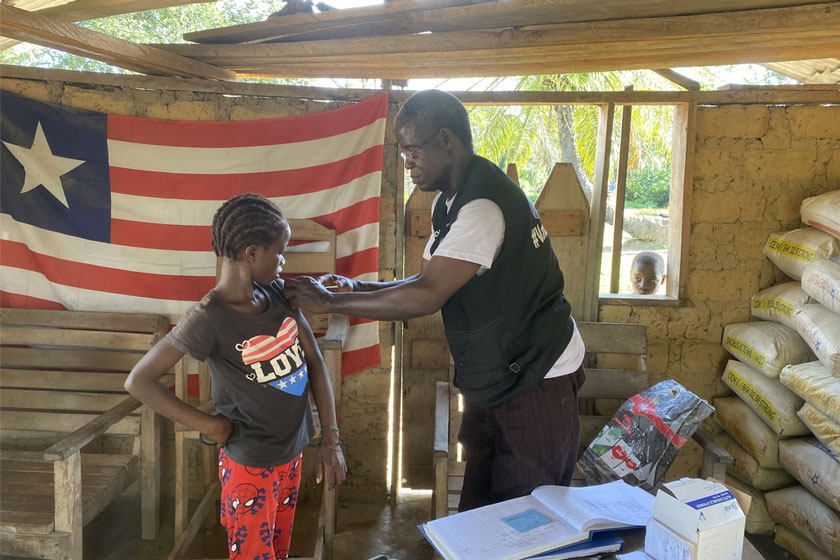Everything you need to know about ‘subclade K’ flu - and vaccine protection against it
As a new branch of H3N2 influenza gains ground, we explore what it means for this season’s flu vaccine.
- 14 November 2025
- 5 min read
- by Linda Geddes

A new, fast-growing twig has appeared on influenza’s ever-branching family tree – one genetically different enough to have set scientists on alert. Known as H3N2 subclade K, it’s already dominating influenza samples in places like the UK. But has it drifted far enough from the vaccine strain to matter? And how well will seasonal flu vaccines stand up against it?
What is H3N2 subclade K influenza?
Influenza viruses are constantly evolving, which is why the World Health Organization closely monitors which flu viruses have been circulating, and makes recommendations about which strains to include in each year’s seasonal flu vaccine, to keep up with them. The key issue is small genetic changes to the virus’s surface proteins – particularly hemagglutinin (H), the protein that vaccines target. This is the “H” in influenza strain names like H3N2 or H5N1.
H3N2 is a well-established human seasonal flu virus that has circulated for decades, although like all influenza A viruses, it originally came from a bird flu virus. It was one of the main viruses circulating during last year’s winter flu season in the northern hemisphere, alongside H1N1 and influenza B. Because of that, it is one of the viruses included in this year’s seasonal flu vaccine.
The issue is that, although still part of the H3N2 family, the current variant – known as subclade K – has evolved enough mutations to differentiate it from the reference strain (subclade J.2) chosen for this season’s vaccine back in February.
“The current circulating influenza A(H3N2) virus acquired seven new mutations over the summer, which means the virus is quite different to the A(H3N2) strain included in this year’s vaccine,” said Dr Antonia Ho, Clinical Senior Lecturer and Consultant in Infectious Diseases at the University of Glasgow, UK. “It also means that the virus could have changed sufficiently to escape the immunity that has been built up from previous infections and vaccinations.”
How quickly is it spreading?
Subclade K is thought to have emerged at the tail end of Southern Hemisphere's flu season, and early data from the United Kingdom and Japan suggests it is already represented in most flu samples. Subclade K has also been detected in North America, although it is unclear what proportion of samples it currently accounts for there.
In the UK, the flu season began around five weeks earlier than usual, with increases first seen in teenagers and young adults, followed by younger children. According to the UK Health Security Agency (UKHSA), almost all recent cases (98%) have been influenza A, and among those subtyped, around 84% are H3N2. Of these, around 87% are subclade K.
Early starts to the flu season have also been observed in parts of the European Union, although overall case numbers remain relatively low. While most EU cases are H3N2, limited sequencing means it is still unclear what proportion belongs to subclade K.
According to Prof Adam Finn at the University of Bristol, UK, an early start to the flu season could suggest that the strain or strains in circulation are finding it easier than usual to spread about, meaning they’re doing so before the colder weather conditions that usually signal and drive the onset of the season.
“An important possible explanation for this could be that there is less immunity than usual in the population controlling the spread of flu viruses,” he said.
Does it cause more serious disease?
Compared to H1N1, H3N2 generally tends to cause more severe illness, particularly in older adults. “For example, in the 2022–2023 winter season when A(H3N2) was the dominant virus, there were 16,000 influenza-associated deaths [in the UK], compared to 8,000 last winter,” said Ho.
An early flu season also means that fewer vulnerable members of the population may have received their flu vaccine in time, leaving them less protected.
Have you read?
Will the flu vaccine protect against subclade K?
Early UK data suggests that although the new H3N2 subclade K virus has drifted from the strain included in this year’s flu vaccine, the vaccine is still offering meaningful protection. Laboratory tests in immunised ferrets – a standard model for assessing how well antibodies recognise circulating flu stains – indicate that their antibodies were less effective at recognising subclade K than the vaccine strain.
However, antibody tests only capture one aspect of how vaccines protect us. More importantly, real-world evidence from the UK Health Security Agency (UKHSA) suggests that the 2025/6 vaccine is currently 70 to 75% effective at preventing hospital attendance in children aged 2 to 17, and 30 to 40% effective in adults.
Flu vaccine effectiveness varies from season to seaso,n but typically falls between 30% and 60%, with higher protection often seen in younger age groups – so this early data is encouraging, UKHSA said.
“These results provide reassuring evidence that this season’s flu vaccines currently offer important protection to children and adults, despite concerns about the new subclade,” said Dr Jamie Lopez Bernal, Consultant Epidemiologist for Immunisation at UKHSA. “The high vaccine effectiveness in children strengthens the case for ensuring all eligible young people get vaccinated. When more children are protected, it helps stop the spread of flu to others around them.
“Importantly, whatever strains do circulate here this winter, we can be confident that the vaccine will still help to protect those most vulnerable from developing serious illness and being hospitalised. We strongly encourage all those eligible to get vaccinated against flu as soon as possible – it remains our best defence against serious illness.”








